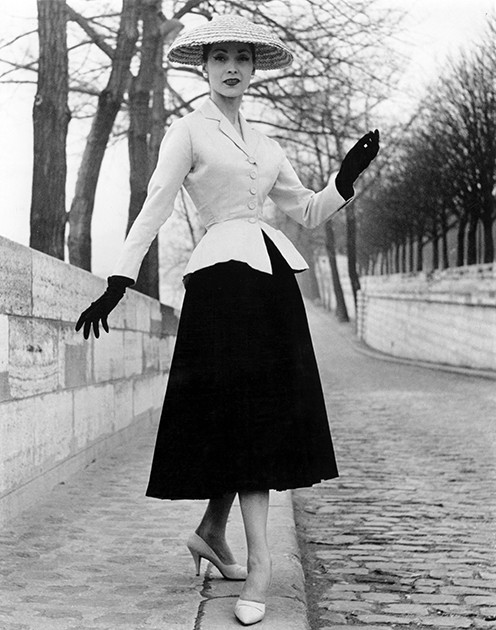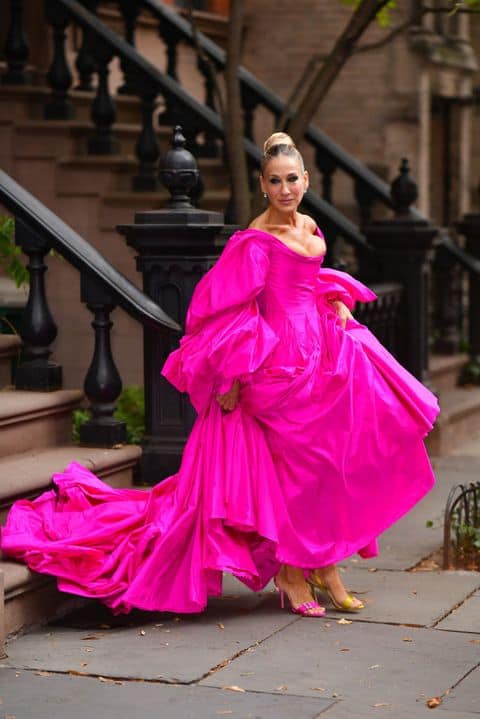Seeing the same thing in two different colors – pink and blue – we instantly understand: the first for the girl, the second for the boy. It is believed that from birth, depending on the gender, people are attracted to objects of a specific shade, and dressing children in the colors of the “opposite sex” in Society is still considered ridiculous. But this was far from always. “Furilia” figured out why once the girls were supposed to wear blue clothes, the boys — pink, and remembered who and how had imposed stereotypes on the contrary to the world. Why the world divide male and female colors?
Blue for girls
The division into “male and female” colors occurred relatively recently – only by the middle of the last century. Until that time, no one attached particular importance to the shades of children’s clothing. Infants, both boys and girls, were often dressed up in white cotton dresses, since they could easily be bleached during washing.
Blue and pink, on the other hand, did not have a gender affiliation and were considered rather the colors of youth and freshness. The first, for example, generally had a religious meaning: in sculpture, painting and icons, the Virgin Mary was depicted in blue robes that symbolized purity and purity. For this reason, girls’ clothing was mostly blue. For boys, respectively, they chose pink – as a more neutral version of red, meaning masculinity and strength.
In 1927, the American magazine Time published a color chart that best suits children of different sexes, according to leading US retail chains. So, the Boston Filene’s, New York’s Best & Co, the Cleveland Halle’s and the Chicago Marshall Field – all recommended to buy pink for sons and blue for daughters.
This trick, of course, was invented by marketers. Parents who have children of both sexes had to buy new, “matching” color sets of clothes, accessories and toys for each child. Indeed, now “in self-respecting families” the brothers cannot carry the old things of the sisters, and vice versa.
Color of freedom
After the Second World War, modern perception of gender colors came in the West. However, the exact date and reasons for these changes are still not fully defined. In the second half of the 40s, clothing manufacturers suddenly announced: boys like blue more, girls like pink, and began to produce collections in these colors.
In 1947, the French fashion house Dior created a fundamentally new (especially after impersonal, shapeless wartime costumes) female look new style. The clothing invented by Christian Dior focused on all the virtues of the female figure, emphasized the thin waist and fragile shoulders. Such outfits became a complete antipode to the then-familiar type of worker, sweating her face in the factory while her husband was fighting at the front. Despite the fact that society condemned the designer for such impudence, his collections found fans around the world.

Here, the marketing departments of children’s clothing firms were again savvy. They proposed a new trick: now the silhouettes of children’s clothing were exactly the same as the adult cut. Girls began to dress up in delicate, feminine, fitted dresses. The boys were supposed to dress like their fathers – in wide trousers and shirts. As a result, the sisters and brothers again needed a separate wardrobe, and retailer sales jumped.
In the early 50s, another innovation appeared in fashion magazines: the pink color was suddenly recognized as a symbol of freedom. The girls were asked to wear pink and red clothes to mark the end of the war. Tired of the dirty gray “soldier” costumes, they eagerly picked up the trend.
In a barbie world
One of the trendsetters for pink can be called Mamie Eisenhower, the wife of 34th U.S. President Dwight Eisenhower. On the day of his inauguration in 1953, she appeared before the public in a magnificent pink dress, which made a splash among Americans. After that, Mamie repeatedly appeared in dresses of this particular color, and throughout the country women swept pink items from the shelves not only for themselves, but also for their daughters.
A few years later, a doll was invented for the latter, which later became the best-selling doll in the world. Barbie – a real sensation in the world of toys for girls, as well as a role model for their mothers – lived, of course, in a pink house, used pink furniture, rode a pink car and adored everything pink.

At about the same time, the musical Funny Face was released, the heroine of which, the editor of the fashion magazine, devotes an entire ode to pink. In her song, she calls it the color of modern women and once again offers to erase the events of the war years, contrasting pink with gloomy military colors.
But finally, the position of the “female” color pink was fixed in the early 60s. In the minds of Americans, all the pink-cover publications in the kiosks were female, all the pink goods in stores — for women, any advertisement where pink tones prevailed — was aimed at women. Advertisers used the trend with all their might: on the pages of any magazine one could certainly see an illustration where, like a Barbie, a girl in a pink dress with pink lips and manicure stands against the backdrop of a pink car or holds a pink handset in her hand.
READ MORE Prince Harry: Why the Whole World Loves Him
No longer the weaker gender
Soon, however, the “pink boom” ceased. In the 70s, during the “second wave” of feminism, women completely abandoned sugary pink things, fitted dresses and heels. Having achieved full equality and the elimination of any form of discrimination (the corresponding convention was established by the UN in 1979), they increasingly began to wear men’s pants, shorts and business suits. The once beloved pink color was left to very young girls and a Barbie doll.
Over time, the love of the pink color faded, sometimes flashed with renewed vigor, and the women either refused to recognize themselves as a weaker sex, or, on the contrary, deliberately extended their femininity. Despite the fact that many fashion brands specializing in products for women, again resort to pink shades for advertising purposes (Victoria’s Secret even has a whole line called Pink), in the modern society of stereotypes, pink is considered the “color of blondes”, naivety, and often frivolity at all.
Today, color prejudices remain so strong that a fairly adult, two-year-old child who, by all external signs, looks like a boy, but dressed in a pink jumpsuit, will be perceived exclusively by the girl.
Pink gene
To what age people begin to associate their gender with pink or blue, a lot of research has been devoted. Many of them prove that children, regardless of gender, prefer blue to all other colors, and hardly confirm the presence of an innate tendency to pink in girls. Another experiment, published in the British scientific journal British Journal of Developmental Psychology, nevertheless revealed not only a trend in the color preferences of the two sexes, but also the exact age of their formation.
The study involved children aged seven months to five years. Each child was offered eight pairs of objects of different colors in turn, while each pair always had one pink object. As a result, it turned out that by the age of two, girls preferred pink objects much more often than boys, and by the age of two and a half – almost always pink was chosen from two objects. The boys, in turn, carefully avoided him. And the older the boy – the less pink things appeared in his collection.
There is another hypothesis about the formation of a tendency to “male and female” colors. Scientists suggest that such preferences are rooted in antiquity, when men were engaged in hunting, and women – in gathering. Then the blue sky was a signal of favorable conditions for hunting, and the red color and its shades told women about the ripeness of the berries. One way or another, even if color preferences are laid in us genetically, companies have long learned how to deal with nature and manage them for profit.
Featured image on https://www.harpersbazaar.com/
READ ALSO “Now burst!”: Celebrities Who Made a Mistake With the Size Of the Dress
READ MORE 6 Decisive Female Celebrities Who Have Offered Marriage To Their Men

